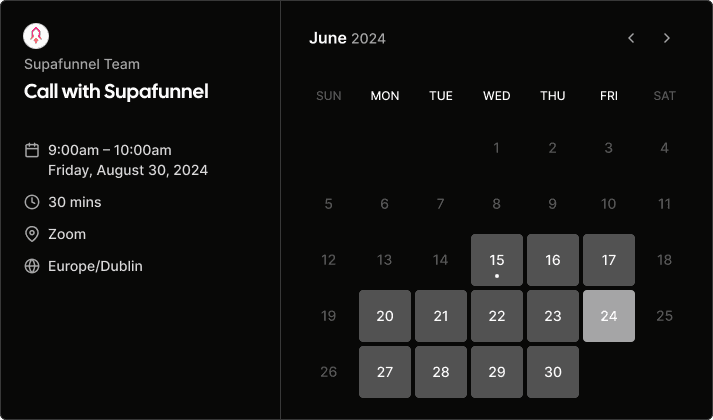Business Technology
Voice AI vs Live Agents: Which Saves More Money?
Explore how Voice AI significantly cuts customer service costs compared to live agents, enhancing efficiency and scalability for businesses.

Author

Raj
Jul 18, 2025
Voice AI is reshaping customer service by offering significant cost savings over live agents. Here’s the key takeaway:
Cost per interaction: Voice AI costs $0.25–$0.50, compared to $3.00–$6.00 for live agents.
Annual savings: Businesses can reduce customer service expenses by up to 70%–90% with Voice AI.
Scalability: Voice AI handles 5x more calls instantly, with 24/7 availability, while live agents require hiring, training, and higher costs during peak demand.
Turnover costs: Replacing a live agent can cost $10,000–$20,000, while Voice AI has no such expenses.
Voice AI is ideal for repetitive tasks and high call volumes, while live agents excel in handling complex or emotional interactions. For maximum efficiency, many businesses combine both approaches.
Quick Comparison
Factor | Voice AI | Live Agents |
|---|---|---|
Cost per minute | $0.03–$0.10 | $0.40–$0.90 (outsourced) |
Monthly cost | ~$185 (1,000 mins) | ~$2,600–$3,400 |
Availability | 24/7 | Limited to shifts |
Scalability | Instant | Requires weeks for hiring |
Turnover cost | None | $10,000–$20,000 per agent |
Voice AI delivers consistent performance, scales effortlessly, and reduces costs, making it a smart solution for businesses looking to optimize customer service.
AI Voice Agents vs Human Agents: Who’s Really Winning?
Cost Breakdown: Voice AI vs Live Agents
Breaking down the costs of Voice AI and live agents reveals more than just a difference in per-minute pricing. By diving into their individual cost structures, it becomes clear why many businesses are opting for AI-powered solutions. Below, we outline these differences in detail.
Voice AI Cost Structure
Voice AI typically follows a pay-as-you-use model. Costs come from several components, including ASR (Automatic Speech Recognition), TTS (Text-to-Speech), LLM processing, telephony services, and platform fees. Here’s a quick breakdown:
Per-minute rates: Range from $0.03 to $0.10.
TTS services: Add approximately $0.05–$0.12 per minute.
Telephony costs: Around $0.014 per minute, plus about $1.15 per month for a local U.S. number.
Platform fees: Roughly $0.05 per minute.
For example, Bland AI charges $0.09 per minute for connected calls, while Vapi and Vocode offer competitive rates starting at around $0.05 per minute. TTS providers like ElevenLabs charge $0.05–$0.12 per minute for business plans.
Setup and subscription costs vary based on business needs:
Entry-level packages: $50–$200 per month.
Mid-range solutions: $200–$500 per month.
Enterprise packages: Starting at $1,000+ per month.
Businesses that take a DIY approach - using tools like Twilio, ElevenLabs, and VAPI - can expect costs of about $0.18–$0.20 per minute. For AI-powered outbound calling, the average monthly cost is approximately $185 per AI agent for handling 1,000 minutes of calls.
Live Agent Cost Structure
Live agents, on the other hand, come with recurring expenses that extend far beyond hourly wages. Here’s the breakdown:
Median hourly wage: $20.59 as of May 2024.
Virtual chat agents: Average annual earnings of $35,664, or $17.15 per hour.
But wages are just the beginning. Additional costs include:
Benefits and overhead: These can increase total compensation by 25–40%, covering healthcare, retirement, and payroll taxes.
Training: Onboarding new agents requires weeks of investment, covering scripts, tool navigation, compliance, and customer interaction protocols.
Termination costs: Replacing a call center agent can cost up to $31,416.
Infrastructure expenses also add up:
Call center software: Typically $120 per user per month.
Outsourcing costs: Around $20 per hour, with monthly expenses per agent ranging from $2,600 to $3,400.
Cost Comparison Table: Voice AI vs Live Agents
Cost Component | Voice AI | Live Agents |
|---|---|---|
Per-minute cost | $0.03 – $0.10 | $0.40 – $0.90 (outsourced) |
Monthly cost per agent | ~$185 (1,000 minutes) | ~$2,600 – $3,400 |
Annual salary equivalent | ~$2,220 (1,000 min/month) | ~$35,664 – $45,000+ |
Benefits/overhead | None | 25–40% of base salary |
Availability | 24/7 | 8 hours/day (with breaks) |
Termination cost | None | ~$31,416 per agent |
Many enterprise clients report cutting customer service costs by up to 70% while also improving satisfaction metrics after implementing Voice AI systems. Providers like Dialzara even claim to reduce staff costs by as much as 90%.
These figures highlight why Voice AI is becoming an attractive alternative. While live agents require ongoing investments in salaries, benefits, and infrastructure, Voice AI offers a predictable, usage-based model that scales efficiently to meet business demands.
Scaling and Flexibility Differences
The ability to scale efficiently plays a massive role in controlling costs for call center operations. When call volumes surge unexpectedly, the contrast between Voice AI and live agents becomes glaring. Voice AI systems can seamlessly handle thousands of calls at once, while traditional call centers often scramble to find and train extra staff to meet the demand.
Voice AI Scaling and Cost Efficiency
Voice AI has transformed the way businesses manage fluctuating call volumes. Unlike human agents, who can only manage one conversation at a time, Voice AI systems can juggle thousands of customer interactions simultaneously across multiple channels - all without compromising service quality.
The cost advantages are hard to ignore. While the cost of a human agent interaction ranges from $4.00 to $8.00, Voice AI manages the same for under $0.50 per interaction. This translates to a cost reduction of 85–90% for routine tasks.
Take this example: a financial services provider in Texas implemented Voice AI and saw its First Call Resolution jump from 54.46% to 63.04%. They eliminated 487,000 repeat calls, saved $1,462,800 annually, and increased coaching sessions per agent by an impressive 153%.
Similarly, Elisa's chatbot, Annika, handles 34% of inbound inquiries across 150 topics and 800 specific issues. This automation saved an entire year of agent time while maintaining over 90% routing accuracy and high service quality.
Voice AI systems can manage up to five times the usual call volume while maintaining excellent service standards. During peak periods, they reduce customer wait times by 73% and offer 24/7 availability without requiring overtime pay, shift adjustments, or additional staffing expenses. These benefits sharply contrast the hurdles faced by traditional live agent models.
Live Agent Scaling Challenges
The travel industry offers a clear example of these challenges. In the UK, travel companies often face a 300–400% spike in call volumes during peak booking seasons. Temporary staffing can cost up to $234 per agent per day (converted from £180), and the industry loses roughly $3.6 billion annually (converted from £2.8 billion) due to the operational chaos during these periods.
Live agents have natural limitations that make scaling difficult. During high-demand times, hiring and training new staff can take weeks, leading to longer wait times, agent burnout, inconsistent service quality, and higher operational costs.
For instance, one peak season strategy involved deploying 280 agents, incurring around $3.6 million in extra costs (converted from £2.8 million). This effort resulted in 35-minute wait times, a 22% call abandonment rate, and only 45% First Call Resolution. In contrast, a hybrid model combining 90 human agents with Voice AI reduced costs to roughly $830,000 (converted from £640,000). This approach achieved sub-5-second wait times, a 4% call abandonment rate, 78% First Call Resolution, and high satisfaction scores - delivering $2.8 million in savings while providing better service.
Dental offices also highlight the cost disparity. Traditional outsourced call centers charge $8 to $15 per call, while Voice AI systems bring that cost down to less than $1.50, even during busy periods. Additionally, AI systems cut hold times from over 3 minutes to under 10 seconds, significantly improving patient access and satisfaction.
Voice AI’s ability to maintain consistent performance during demand surges sets it apart from live agent models.
Scaling Comparison Table: Voice AI vs. Live Agents
Scaling Factor | Voice AI | Live Agents |
|---|---|---|
Peak volume handling | Up to 5× normal capacity instantly | Requires weeks to hire/train staff |
Cost during spikes | Consistent per-minute rate | Up to $234/day per temporary agent |
Wait time reduction | 73% reduction during peak periods | Wait times often increase |
Call abandonment rate | Under 5% | Typically 15–25%, up to 22% during peaks |
Availability scaling | Instant 24/7 capacity | Limited by shift scheduling |
First-call resolution | 78–95% consistently | Can drop to around 45% during peaks |
Scaling timeline | Immediate | 2–6 weeks for hiring and training |
With 64% of customers now expecting 24/7 availability and immediate responses, Voice AI delivers on these expectations. In contrast, live agents often struggle to adapt to fluctuating demand without driving up costs. Companies leveraging Voice AI report up to 80% cost savings, with AI reducing customer service expenses by as much as 30% through efficient handling of high interaction volumes.
For example, ezCater demonstrated these benefits by using Level AI. They achieved a 13% reduction in average handle time and a 23% decrease in call hold times during peak hours. As a result, 94% of calls during these periods were shortened by 30 seconds, allowing agents to work more efficiently while maintaining excellent service quality.
Training, Maintenance, and Performance
The costs tied to training and maintaining your customer service solution can have a big impact on your budget. Voice AI systems and live agents differ greatly in terms of the time, money, and effort needed to keep them running smoothly.
Voice AI Training and Maintenance
Voice AI systems involve an upfront investment with relatively low ongoing maintenance costs. Training these systems primarily involves feeding them data and applying periodic updates through machine learning. Unlike human agents, who need constant supervision and coaching, voice assistants can be updated with new information via algorithms. These updates allow the system to improve over time without requiring lengthy training sessions or workshops.
Voice AI delivers consistent performance by providing accurate responses every time, strictly following its programmed scripts and rules without deviation. This efficiency not only reduces training expenses but also ensures uniform responses, making it a cost-effective solution.
Live Agent Training and Performance Issues
Live agents, on the other hand, require ongoing investment in supervision, retraining, and other human resource expenses. Every new hire adds costs for onboarding, training, benefits, and management. Initial training often takes weeks, and agents need continuous coaching and performance reviews to stay effective. Policy changes or updates also demand frequent retraining, which can be both time-consuming and costly.
Inconsistent performance is another challenge. Human agents might provide varying answers to the same question, influenced by their knowledge, mood, or interpretation of company policies. Long shifts can lead to fatigue, increasing the likelihood of errors and slower response times. While live agents can adapt quickly to unexpected situations, maintaining this flexibility requires constant oversight and robust quality assurance processes.
Training and Performance Comparison Table
Factor | Voice AI | Live Agents |
|---|---|---|
Initial training cost | One-time development investment | High onboarding and training costs |
Ongoing training | Periodic data updates | Continuous coaching and retraining |
Performance consistency | Consistent, identical responses | Varies with mood, knowledge, fatigue |
Error rate | Programmed for accuracy | Higher, especially under pressure |
Maintenance cost | Minimal after implementation | Salaries, benefits, management costs |
Adaptation speed | Requires developer updates | Immediate response to changes |
Availability | 24/7 with no performance drop | Limited by shifts and fatigue |
Cost per interaction | $0.01–$0.08 | Around $0.60 per minute |
A case study highlighted that voice agents cost approximately $480,000 annually to handle the same call volume that would cost a 40-person human team roughly $2 million - a 76% reduction in costs.
That said, the most effective strategy often blends both solutions. Subhash Kalluri, Founder of FreJun, puts it best:
"AI Voice Bots and Human Agents are not mutually exclusive. In fact, the best customer service strategies use both, combining the efficiency and scalability of AI with the empathy and adaptability of humans."
This hybrid approach allows AI to handle routine inquiries while human agents tackle more complex issues requiring emotional intelligence and critical thinking. By combining these strengths, businesses can optimize costs without compromising service quality. Successfully managing these training and maintenance differences is key to maximizing ROI in customer service operations. Voice AI, in particular, stands out as a cost-efficient option across various operational areas.
Cost-Saving Examples and Financial Models
Let’s take a closer look at how Voice AI delivers financial benefits through real-world applications and scalable cost models. These examples highlight the substantial savings businesses can achieve by adopting this technology.
Cost-Saving Example: A Dental Practice
A local dental practice introduced an AI-powered receptionist system and saw its monthly call costs drop to just $200 - saving over $3,000 compared to employing a human receptionist. Beyond the savings, the practice also reduced no-show rates by 35% thanks to automated appointment reminders. Additionally, after-hours bookings surged by 40%, aligning with similar outcomes observed across the healthcare sector.
How Costs Change with Call Volume
Voice AI becomes even more cost-effective as call volumes increase. Take a small business handling 1,000 calls per month, with each call lasting about three minutes. This amounts to 50 hours of support time. If a human receptionist earns $20 per hour, the monthly labor cost would be around $1,000. By contrast, Voice AI handles the same workload for just $150–$300 per month.
As call volumes double, human labor costs also double, but Voice AI scales much more efficiently. For instance, the cost might rise modestly to $250–$500 per month, significantly improving the overall percentage savings. Traditional call centers often face additional costs for overtime and idle staff during peak periods. Voice AI, however, adapts dynamically, eliminating those extra expenses.
At the enterprise level, the savings are even more striking. AI agents cost about $0.25 to $0.50 per interaction, compared to $3.00 to $6.00 for human agents. Major companies have reported annual savings ranging from $1.3 million to $120 million through AI automation. For example, a North American food services company reduced agent escalations by 66%, saving $10.2 million. Similarly, Krafton, a South Korean video game developer, cut costs by 15% while enhancing customer satisfaction. During peak demand, when human agents cost $4.50 to $9.00 per interaction, AI still operates at $0.25 to $0.50 - delivering savings of 89% to 94% in high-demand scenarios.
These examples and models demonstrate that Voice AI isn’t just a way to cut costs - it’s a smart investment in efficiency and service quality. Over time, the savings compound, making it an increasingly appealing solution for businesses of all sizes.
Conclusion: Choosing the Right Solution for Maximum ROI
When it comes to boosting return on investment, Voice AI stands out as a powerful tool for US businesses aiming to streamline customer service operations. By cutting operational costs, improving productivity, and significantly reducing handling times, Voice AI offers measurable benefits. For instance, AI systems can achieve a 35% reduction in handling time and a 30% improvement in customer satisfaction within just the first quarter.
Voice AI also shines in scalability. Unlike human agents, who require recruitment, training, and management during peak times, Voice AI effortlessly scales to meet demand. It can handle up to 5,000 simultaneous calls, ensuring uninterrupted 24/7 service without the logistical headaches of hiring seasonal staff.
That said, human agents still play a vital role in certain scenarios. Complex issues, emotionally charged conversations, and sensitive topics - like healthcare discussions - often require a personal touch. Many customers also prefer interacting with a real person when dealing with frustrating or nuanced situations. This is why many businesses opt for a hybrid approach: AI manages routine tasks, while human agents focus on high-value, intricate interactions.
The real-world results speak volumes. Companies embracing Voice AI have seen dramatic improvements. For example:
Mortgage Direct now handles 75% of outbound calls with AI, significantly lowering costs.
Zenith Travels reduced response times by 5x, leading to a 3-5x increase in revenue.
TechForward Solutions slashed operational costs by 50% while speeding up response times.
"Supaagents saves thousands daily - our highest ROI investment." – Ilja Lukac, CEO, The Bur3au
Supafunnel, a leader in Voice AI solutions, offers tailored services that integrate seamlessly with over 300 tools while providing 99.9% accuracy and multi-language support. Their globally distributed team ensures 24/7 assistance, backed by a 15-day satisfaction guarantee and a full year of free support.
To maximize ROI, businesses should focus on high-volume, repetitive tasks where Voice AI delivers the most value. Integrating Voice AI with existing CRM and telephony systems ensures smooth operations, while human agents remain available for cases requiring empathy and expertise.
With 39% of US businesses already citing cost savings as a key benefit of AI, now is the time to act. Voice AI’s ability to scale and drive efficiency makes it a smart, long-term investment for businesses of any size.
FAQs
What’s the best way to integrate Voice AI into your current customer service system?
To bring Voice AI into your customer service setup without a hitch, begin by integrating AI-powered tools directly into your existing systems. Doing this keeps disruptions to a minimum and ensures the rollout goes smoothly. Voice AI can take care of routine questions, direct calls to the right departments, and even provide real-time summaries, boosting both efficiency and customer satisfaction.
For an even better experience, link Voice AI with your CRM and order management platforms. This connection helps simplify processes, tailor customer interactions, and maintain a consistent level of service. By following these steps, businesses can upgrade their customer service operations, cut costs, and improve overall performance.
What challenges might businesses face when using only Voice AI for customer service?
Relying solely on Voice AI for customer service comes with its own set of hurdles. One of the biggest challenges is handling accents and dialects, which can sometimes confuse the AI and lead to misunderstandings. This, in turn, can leave customers feeling frustrated. Another limitation is the AI's difficulty in grasping emotional tones or managing complex, one-of-a-kind situations, both of which are crucial for delivering a satisfying customer experience.
Moreover, Voice AI often falls short in showing empathy, an essential ingredient for building trust and ensuring customers feel heard and valued. Because of these limitations, many businesses opt for a hybrid approach - pairing Voice AI with human agents. This combination helps maintain efficiency while ensuring that tasks needing a personal touch are handled with care.
Is Voice AI or live agents more cost-effective for handling complex or emotional customer interactions?
Voice AI offers a smart solution for handling straightforward, high-volume tasks, often slashing operational costs by an impressive 80% to 90%. But when the situation calls for more complex or emotionally charged interactions, live agents step in as the better choice. They bring a human touch to personalized support, tackle sensitive issues with empathy, and handle nuanced scenarios that AI still struggles to manage.
While Voice AI shines in boosting efficiency and cutting costs, human agents remain essential for those high-stakes, emotionally sensitive conversations. Together, they create a well-rounded and effective customer service strategy.
Related posts
Latest Blog Posts

Book a Consult
Have a conversational AI or custom automation project in mind? Book a call today and get a time and cost estimate




